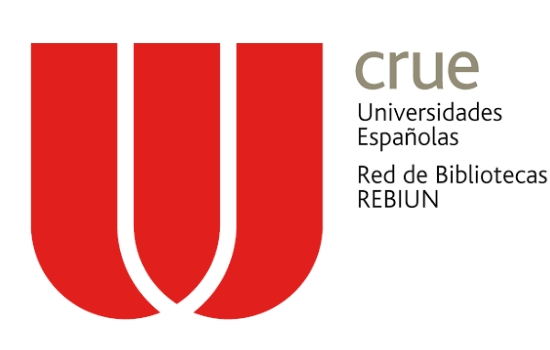Reintroducing Māori ethnomathematical activities into the classroom: traditional Māori spatial orientation concepts
Resumen
Abstract
Māori mathematical practices were excluded from schooling in Aotearoa/New Zealand for over 150 years as a result of explicit policies precluding the use of the Indigenous language and culture. As a consequence of the range of assimilationist policies, by the 1970s, the Māori language was considered endangered. In response to the perilous state of the language, Māori communities set up their own schools, initially outside of the state system, to support the revitalisation of the language and culture. However, the reintroduction of the cultural knowledge in areas such as mathematics has not matched language revitalisation efforts. Many original ethnomathematical practices are no longer in general use in the Indigenous community and the practices valued by the European majority remain the norm in the state-mandated school curricula. Spatial orientation is an example of the mathematics curricula content that is based on Western mathematical perspectives. To provide a Māori perspective, this paper draws on interviews with elders and historical data to examine Māori spatial orientation terms and the spatial frames of references that they are derived from. Students in a Māori-medium school were tested on their understanding of this traditional knowledge. As a consequence, a series of learning activities based on Māori spatial orientation concepts were developed and trialled. The outcomes of these learning activities showed some increased understandings about Māori spatial orientation concepts.
Resumen
Las practicas matemáticas maoríes fueron excluidas de la escolarización en Aotearoa / Nueva Zelanda durante más de 150 años, como resultado de las políticas explícitas que impiden el uso de la lengua y cultura indígena. Como consecuencia de la gama de políticas asimilacionistas, para la década de 1970, el idioma maorí fue considerado en peligro de extinción. En respuesta a la peligrosa situación de la lengua, las comunidades maoríes crearon sus propias escuelas, en un principio fuera del sistema estatal, para apoyar la revitalización de la lengua y la cultura. Sin embargo, la reintroducción de los conocimientos culturales en áreas como las matemáticas no ha igualado los esfuerzos de revitalización del idioma. Muchas prácticas etnomatemáticas originales ya no son de uso general en la comunidad indígena y las prácticas valoradas por la mayoría de Europa siguen siendo la norma en los programas escolares exigidos por el estado. Orientación espacial es un ejemplo del contenido de los planes de estudio de matemáticas que se basa en perspectivas matemáticas occidentales. Para proporcionar una perspectiva maorí, este documento se basa en entrevistas con los ancianos y los datos históricos para examinar términos de orientación espacial maoríes y los marcos espaciales de las referencias que se derivan de estos. Los estudiantes en una escuela Māori-medium school fueron probados en su comprensión de su conocimiento tradicional. Como consecuencia de ello, una serie de actividades de aprendizaje basadas en conceptos maoríes de orientación espacial se desarrolló y probó. Los resultados de estas actividades de aprendizaje mostraron el aumento de algunos entendimientos sobre conceptos maoríes de orientación espacial.
Descargas
Referencias
Amoamo, T., Tupene, T., & Neich, R. (1984). The complementarity of history and art in Tutamure meeting-house, Omarumutu Marae, Opotiki. Journal of the Polynesian Society, 1(1), 5-38.
Anderson, J. C. (1969). Myths and legends of the Polynesians. Tokyo, Japan: Charles E. Tuttle.
Auckland Museum (2001). Te ao turoa education kit. Retrieved from: http://www.aucklandmuseum.com/search?q=ika%20a%20maui
Barton, B. (2008). The language of mathematics: Telling mathematical tales. New York: Springer.
Bishop, A. J. (1980). Spatial abilities and mathematics education—A review. Educational Studies in Mathematics, 11(3), 257-269.
Clements, D. H., & Sarama, J. (2009). Learning and teaching early math: The learning trajectories approach. New York: Routledge.
Duff, R. (1977). The moa-hunter period of Maori culture. Wellington, New Zealand: Government Printer.
Edmonds-Wathen, C. (2011). Locating the Learner: Indigenous Language and Mathematics Education. In Clark, J., B. Kissane, J. Mousley, T. Spencer & S. Thornton (eds), Proceedings of the 34th annual conference of the Mathematics Education Research Group of Australasia and the Australian Association of Mathematics Teachers, 3-7 July 2011, Alice Springs, Adelaide: AAMT and MERGA, pp. 217-225
Fishman, J. (1991). Reversing language shift: Theoretical and empirical foundations of assistance to threatened languages. Clevedon, UK: Multilingual Matters.
Gauvain, M. (1993). The development of spatial thinking in everyday activity. Developmental Review, 13(1), 92-121.
Harris, L. J. (1981). Sex-related variations in spatial skill. In L. S. Liben, A. H. Patterson, & N. Newcombe (Eds.), Spatial representation and behavior across the life span (pp. 83-125). New York: Academic Press.
Harlow, R. (2005). Māori: Introduction. In A. Beel, R. Harlow & D. Starks (Eds.), Languages of New Zealand (pp. 59-66). Wellington, New Zealand: Victoria University Press.
Kitchin, R., & Blades, M. (2002). Cognition of geographic space. London, United Kingdom: I. B Tauris & C0.
Klatzky, R. (1998). Allocentric and egocentric spatial representations: Definitions, distinctions, and interconnections. In C. Freksa, C. Habel & K. F. Wender (Eds.) Spatial cognition, an interdisciplinary approach to representing and processing spatial knowledge (pp. 1-18). London, UK: Springer-Verlag.
Lohman, D. F. (1988). Spatial abilities as traits, processes, and knowledge. In R. J. Sternberg (Ed.), Advances in the psychology of human intelligence (pp. 181-248). Hillsdale, NJ: Erlbaum.
McMurchy-Pilkington, C., & Trinick, T. (2002). Horsepower or empowerment: Mathematics curriculum for Maori—Trojan horse revisited. In B. Barton, K. C. Irwin, M. Pfannkuch & M. Thomas (Eds.), Mathematics education in the South Pacific: Proceedings of the 25th Annual Conference of the Mathematics Education Research Group of Australasia (pp. 465-472). Auckland: MERGA
McMurchy-Pilkington, C., Trinick, T., & Meaney, T. (2013). Mathematics curriculum development and Indigenous language revitalisation: Contested spaces. Mathematics Education Research Journal, 25(3), 341-360.
Meaney, T., Trinick, T., & Fairhall, U. (2012). Collaborating to meet languagechallenges in indigenous mathematics classrooms. Dordrecht, The Netherlands: Springer.
Meara, C., & Pérez Báez, G. (2011) Spatial frames of reference in Mesoamerican languages. Language Sciences, 33(6), 837-852. Retrieved from http://carolynomeara.weebly.com/uploads/5/9/0/9/5909917/727v1.pdf
Ministry of Education (1991). Mathematics in the New Zealand curriculum. Wellington, New Zealand: Learning Media.
New Zealand MetService (2014). New Zealand climate. Retrieved from http://about.metservice.com/our-company/learning-centre/new-zealand-climate/
Pederson, E., Danziger, E., Wilkins, D., Levinson, S., Kita, S., & Senft, G. (1998). Semantic typology and spatial conceptualization. Language, 74 (3), 557-589.
Piaget, J., & Inhelder, B. (1956). The child’s conception of space (F. J. Langdon & J. L. Lunzer, Transl.). London: Routledge & Kegan Paul.
Penetito, W. (2010). What’s Māori about Māori education? Wellington, New Zealand: Victoria University Press.
Planas, N. (2014). One speaker, two languages: learning opportunities in the mathematics classroom. Educational Studies in Mathematics, 87(1), 51-66.
Te Ara (2014). Winds and storms. In Basil Kean, Tawhirimātea – the weather. Te Ara – the Encyclopedia of New Zealand URL: http://www.teara.govt.nz/en/tawhirimatea-the-weather/page-5
Simon, J. (1998). Ngā kura Māori: The native schools system 1867–1969. Auckland, New Zealand: Auckland University Press.
Spolsky, B. (2003). Reassessing Māori regeneration. Language in Society, 32(4), 553-578.
Te Tāhuhu o te Mātauranga. (1996). Pāngarau i roto i Te Marautanga o Aotearoa. Wellington, New Zealand: Te Pou Taki Korero.
Trinick, T. (1999). The relationships between Māori culture and Māori mathematical language (Unpublished master’s thesis). University of Auckland, New Zealand.
Trinick, T., Meaney, T., & Fairhall, U. (2015). Finding the way: Cultural revival through mathematics education. In S. Mukhopadhyay & B. Greer (Eds.) Proceedings of the eighth international mathematics education and society conference (pp. 164-168) Portland, OR: Portland State University. Available from: http://mescommunity.info/
Trinick, T., Meaney, T., & Fairhall, U. (2015). E Haere Ana Koe Ki Hea? Spatial thinking: Traditional Māori systems and language of spatial orientation. In R. Averill (Ed.) Mathematics and statistics in the middle years: Evidence and practice (pp. 146-161). Wellington, New Zealand: New Zealand Council of Educational Research.
Williams, H. (1971). A dictionary of the Māori language. Wellington, New Zealand: Government Printer.
Descargas
Publicado
Número
Sección
Licencia
Derechos de autor
Una vez que el artículo es aceptado por la Revista Latinoamericana de Etnomatemática, los/as autores ceden los derechos para publicar y distribuir el texto electrónicamente, así como para archivarlo y hacerlo accesible en línea.
Los autores podrán distribuir su propio material sin solicitar permiso a la Revista Latinoamericana de Etnomatemática, siempre que se mencione que la versión original se encuentra en https://revista.etnomatematica.org
Copyright © 2008, Revista Latinoamericana de Etnomatemática
Todos los contenidos de la Revista Latinoamericana de Etnomatemática se publican bajo la Licencia Creative Commons Atribución 4.0 Internacional y pueden ser usados gratuitamente dando los créditos a los autores y a la Revista, como lo establece esta licencia.











